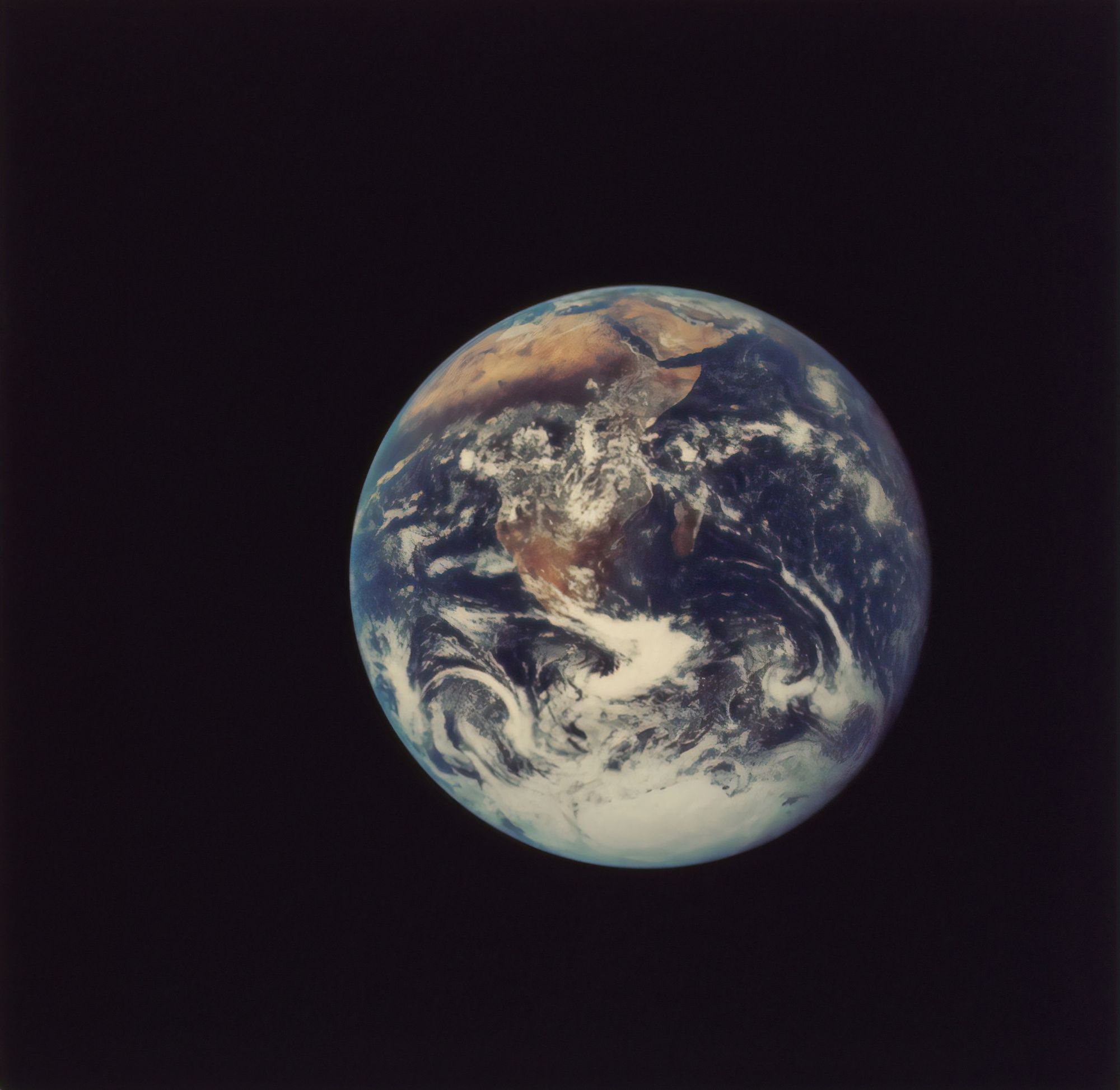Not-This-Earth Day
On the 50th anniversary of Earth Day, spend a moment considering that possibly of another Earth out there somewhere. No, seriously; try it.

On the 50th anniversary of Earth Day, there are so many environmental issues I could highlight – a retrospective of the past 50 years of environmental achievements and failures, the Trump administration’s rolling back of EPA mercury pollution rules in the midst of a pandemic, measured responses from conservatives that remind environmental issues need not be a wedge issue, or hopeful looks to the future.

Photo by The New York Public Library on Unsplash
But, as with many other things in life lately, the coronavirus pandemic has given cause for even more reflection. The New York Times’ podcast, The Daily, recently instituted a new feature known as The Sunday Read, in which an audio version of a feature story is read. Since it started, The Sunday Read has highlighted some great non-coronavirus-related content. Two weeks ago, it was the much-ballyhooed Weird Al Yankovich profile. This past Sunday, it was a much older story that seems to have a new resonance during the ongoing pandemic.
COVID-19 has the power to make us feel small, to make life itself seem small. Not only because of the resulting economic shutdown and stay-at-home orders has our worlds reduced to small geographic areas and limited in-person interactions, but because, for many of us, it’s caused us reprioritize what matters most.
What does such introspection look like on a cosmic scale? The inevitable realization that we are tiny. This profile of astrophysicist Sara Seager drives home that point without bludgeoning you over the head with it. She’s dedicated her life to the search for exoplanets, specifically Earth-like exoplanets orbiting its own star out there somewhere. And through that search, she looks to the farthest reaches of space and seeks to go just a bit farther. She’s not discouraged by the enormity of space, but she’s acutely aware of it. The story seems to just revel in the epic reality of it all. Consider Chris Jones’s introduction to the story:
Like many astrophysicists, Sara Seager sometimes has a problem with her perception of scale. Knowing that there are hundreds of billions of galaxies, and that each might contain hundreds of billions of stars, can make the lives of astrophysicists and even those closest to them seem insignificant. Their work can also, paradoxically, bolster their sense of themselves. Believing that you alone might answer the question “Are we alone?” requires considerable ego. Astrophysicists are forever toggling between feelings of bigness and smallness, of hubris and humility, depending on whether they’re looking out or within.
He opens by focusing on the scientist’s relationship with the vastness of space. It’s a peek behind a curtain that few of us will consider. What, you ask, is it that could warp a person’s thinking in such a way? It’s the actual, literal vastness of space:
The vastness of space almost defies conventional measures of distance. Driving the speed limit to Alpha Centauri, the nearest star grouping to the sun, would take 50 million years or so; our fastest current spacecraft would make the trip in a relatively brisk 73,000 years. The next-nearest star is six light-years away. To rocket across our galaxy would take about 23,000 times as long as a trip to Alpha Centauri, or 1.7 billion years, and the Milky Way is just one of hundreds of billions of galaxies. The Hubble Space Telescope once searched a tiny fragment of the night sky, the size of a penny held at arm’s length, that was long thought by astronomers to be dark. It contained 3,000 previously unseen points of light. Not 3,000 new stars — 3,000 new galaxies. And in all those galaxies, orbiting around some large percentage of each of their virtually countless stars: planets. Planets like Neptune, planets like Mercury, planets like Earth.
The size of a penny held at arm’s length. What a remarkable fact. Even when put into easily understandable bits, specifically designed to be of this world, for our benefit, the concept of 3,000 new galaxies, each with billions of stars and planets, defies human comprehension. And it’s a beautiful thing, to sit in awe and wonder of something as accessible as a clear night sky. Yes, it makes us feel small. But that’s okay; it’s a lesson we could all stand to remember in our tiny lives in our tiny spaces during this massive pandemic.
Is it unfaithful on Earth Day to celebrate the work of a woman who’s looking for another one? I don’t think so, but you be the judge:
The Woman Who Might Find Us Another Earth | The New York Times Magazine
Prefer to listen to the story? Good on you. Audm, the service that offers the best magazine stories from today’s top publications, was recently purchased by The New York Times Company, which no doubt has everything to do with the advent of The Sunday Read addition to The Daily’s podcast output. The stories are excellently produced, and Audm is an excellent way to make sure you don’t miss the must-read articles of the day.
Listen here:
The Sunday Read: The Woman Who Might Find Us Another Earth | Audm and The New York Times Magazine
Or here:
Apple Podcasts | Spotify | Pocket Casts
If you liked what you read, please sign up, follow me on Twitter (@CaryLiljohn06) and then forward to friends to help spread the word.